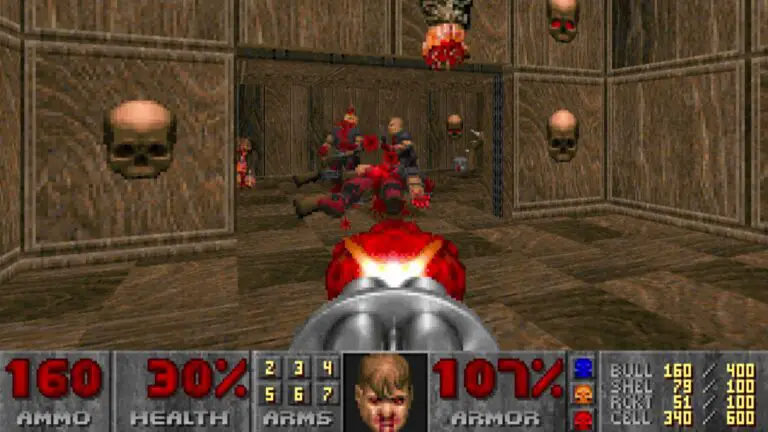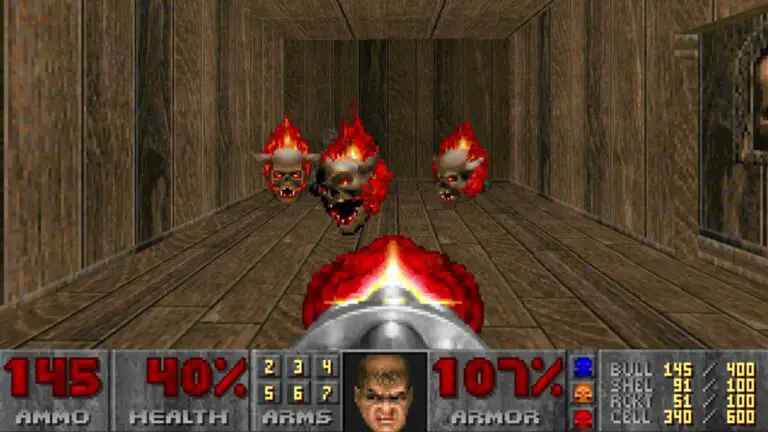The Revolutionary Origin of Doom and Its Legacy in FPS Gaming
The history of Doom is a tale that intertwines the genius of John Romero and John Carmack, marking a pivotal moment in the gaming industry. The original Doom, released in 1993, was not just a game; it was a revolution that set the standard for first-person shooters (FPS) and left an indelible mark on gaming culture. Its significance extends beyond its gameplay, as it encapsulated the spirit of innovation and technological prowess that defined an era of PC gaming.
The development of the original Doom was a collaborative effort that saw John Romero and John Carmack, along with their team at id Software, push the boundaries of what was possible in video games. Building on the success of their previous titles, such as Commander Keen and Wolfenstein 3D, the duo set out to create a game that would surpass anything gamers had seen before.
Doom’s engine was a technological marvel for its time, introducing groundbreaking features that would become staples of the FPS genre. These included:
- Texture-mapped 3D environments
- Variable light levels and atmospheric effects
- Non-orthogonal walls, allowing for more complex level designs
- Multiplayer capabilities, including the iconic deathmatch mode
These key features, combined with the game’s fast-paced action and immersive storytelling, set Doom apart from its predecessors and established a new benchmark for the industry.

How Doom Redefined the FPS Genre and Influenced Game Design
Doom’s design and engine not only delivered a visually stunning experience but also introduced a new level of interactivity and realism to the FPS genre. The game’s engine allowed for objects to have physical characteristics like weight and momentum, a stark contrast to the hit-scan approach of previous shooters.
The critical reception of Doom was overwhelmingly positive, with reviewers praising its advanced graphics and gameplay mechanics. Its legacy endures, as it laid the groundwork for the modern FPS, influencing countless games that followed. Doom’s mod-friendly design also contributed to its longevity, fostering a community that continues to innovate and expand upon the original game’s foundation.

Doom’s Evolution: Advancements and Innovations Through Sequels
As Doom evolved through its sequels, each new entry built upon the success of its predecessor, refining gameplay mechanics and introducing new elements that contributed to the series’ enduring popularity.
| Doom Sequel | Main Features and Advancements |
|---|---|
| Doom 2: Hell on Earth |
|
| Doom 3 |
|
| Doom (2016) |
|
Doom Eternal: Elevating the FPS Experience to New Heights
The release of Doom Eternal in 2020 marked the latest chapter in the storied history of the Doom franchise. Building upon the foundation laid by the 2016 reboot, Doom Eternal expanded the series’ mechanics with an array of new features, pushing the envelope of the first-person shooter genre.
- Enhanced mobility with the addition of a grappling hook and dash mechanics
- A diverse arsenal of weapons, each with unique mods and capabilities
- An intricate and expanded narrative that explores the origins of the Doom Slayer
- A variety of new and reimagined demons, each with specific weaknesses to exploit
- Complex level designs that encourage exploration and strategic combat
The game’s development was not without its challenges, including the impact of the pandemic on the team’s workflow. Despite these obstacles, Doom Eternal’s reception was critical acclaim for its intense combat, stunning visuals, and the depth of its gameplay.

Doom Eternal’s success is a testament to id Software’s ability to innovate and excellence within the FPS genre. The game not only continued the legacy of Doom but also set a new benchmark for action-packed, high-octane gameplay, solidifying the series’ status as a perennial favorite among gamers.

